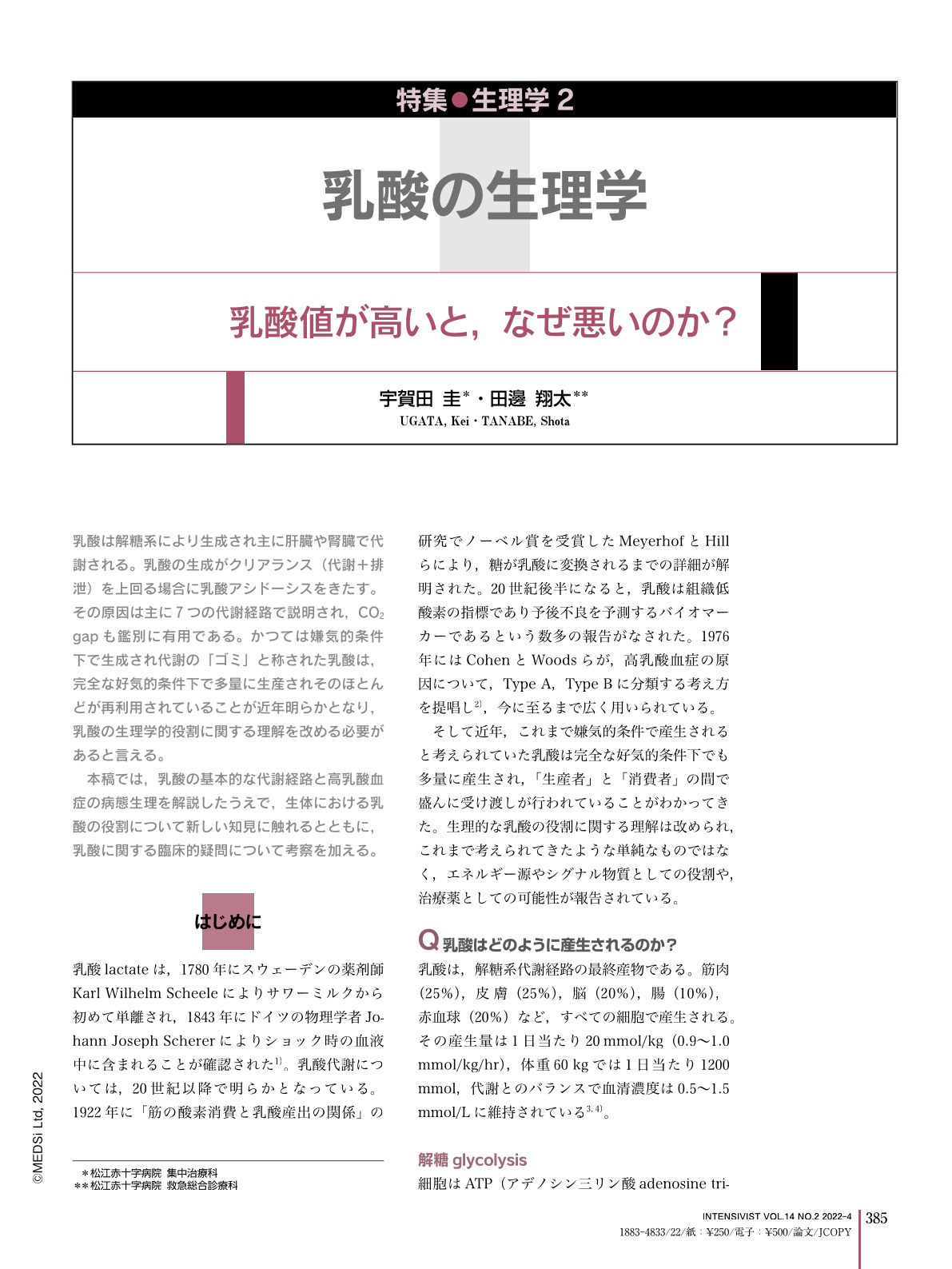Japanese
English
- 有料閲覧
- Abstract 文献概要
- 1ページ目 Look Inside
- 参考文献 Reference
- サイト内被引用 Cited by
乳酸は解糖系により生成され主に肝臓や腎臓で代謝される。乳酸の生成がクリアランス(代謝+排泄)を上回る場合に乳酸アシドーシスをきたす。その原因は主に7つの代謝経路で説明され,CO2 gapも鑑別に有用である。かつては嫌気的条件下で生成され代謝の「ゴミ」と称された乳酸は,完全な好気的条件下で多量に生産されそのほとんどが再利用されていることが近年明らかとなり,乳酸の生理学的役割に関する理解を改める必要があると言える。
本稿では,乳酸の基本的な代謝経路と高乳酸血症の病態生理を解説したうえで,生体における乳酸の役割について新しい知見に触れるとともに,乳酸に関する臨床的疑問について考察を加える。
Lactic acid is produced by the glycolytic pathway and metabolized mainly by the liver and kidneys. Lactic acidosis occurs when lactate production exceeds clearance (metabolism and excretion). The cause is explained by seven main metabolic pathways, and the CO2 gap is also useful for differentiation. Recently, it has become clear that lactic acid, which used to be produced under anaerobic conditions and referred to as metabolic “waste”, is produced in large amounts under completely aerobic conditions and most of it is reused. We may need to revise our understanding of the physiologic role of lactic acid. The basic metabolic mechanisms of lactic acid and the pathophysiology of hyperlactatemia are described, new findings on the role of lactate in the body, and clinical questions related to lactic acid are discussed.

Copyright © 2022, MEDICAL SCIENCES INTERNATIONAL, LTD. All rights reserved.


